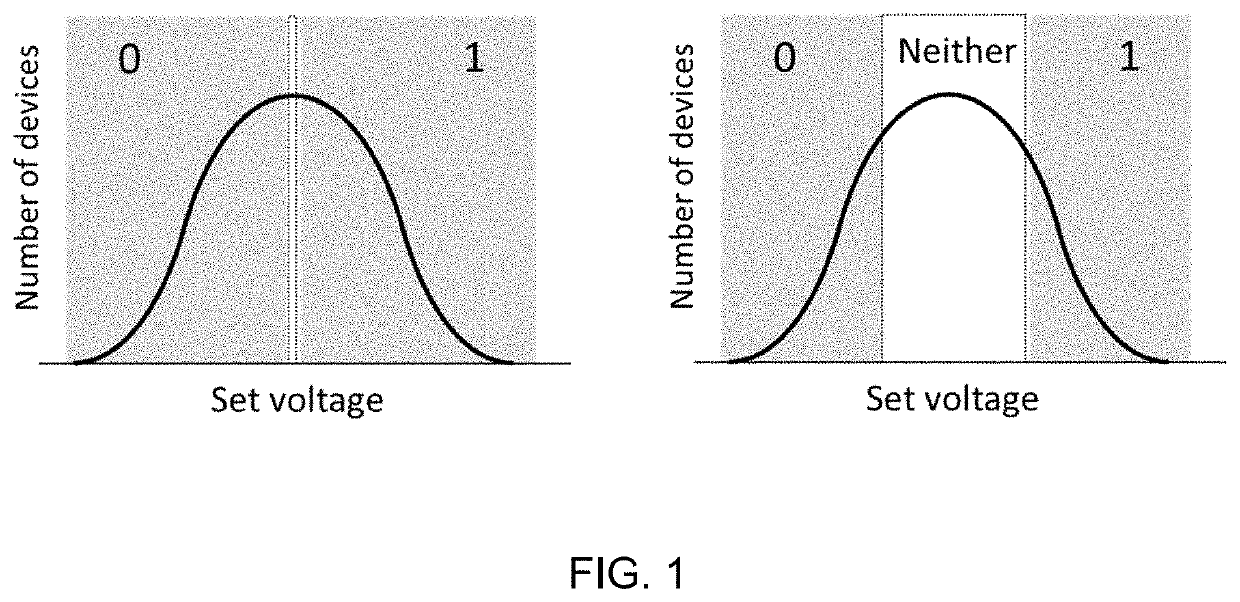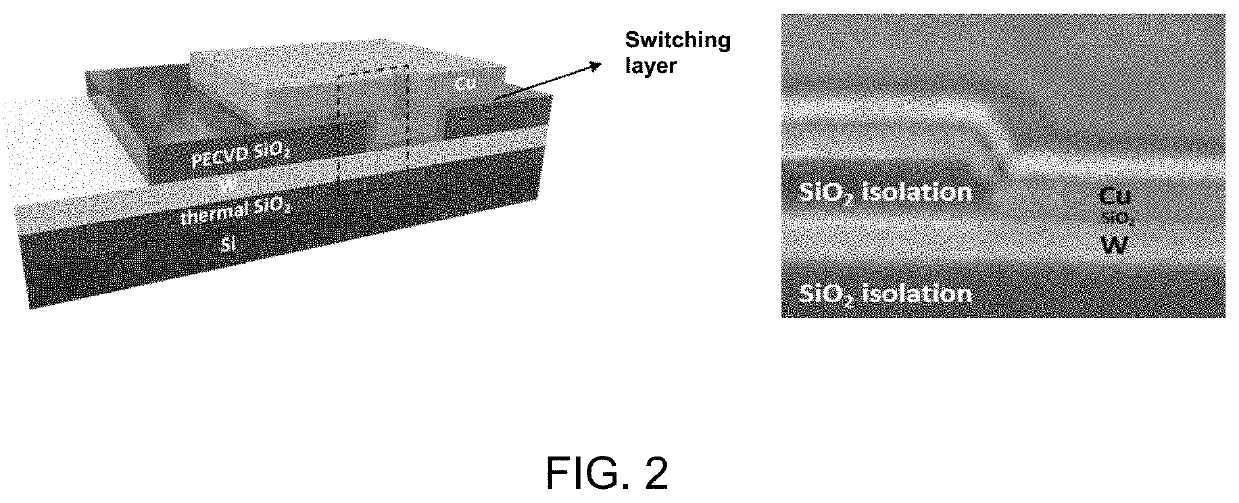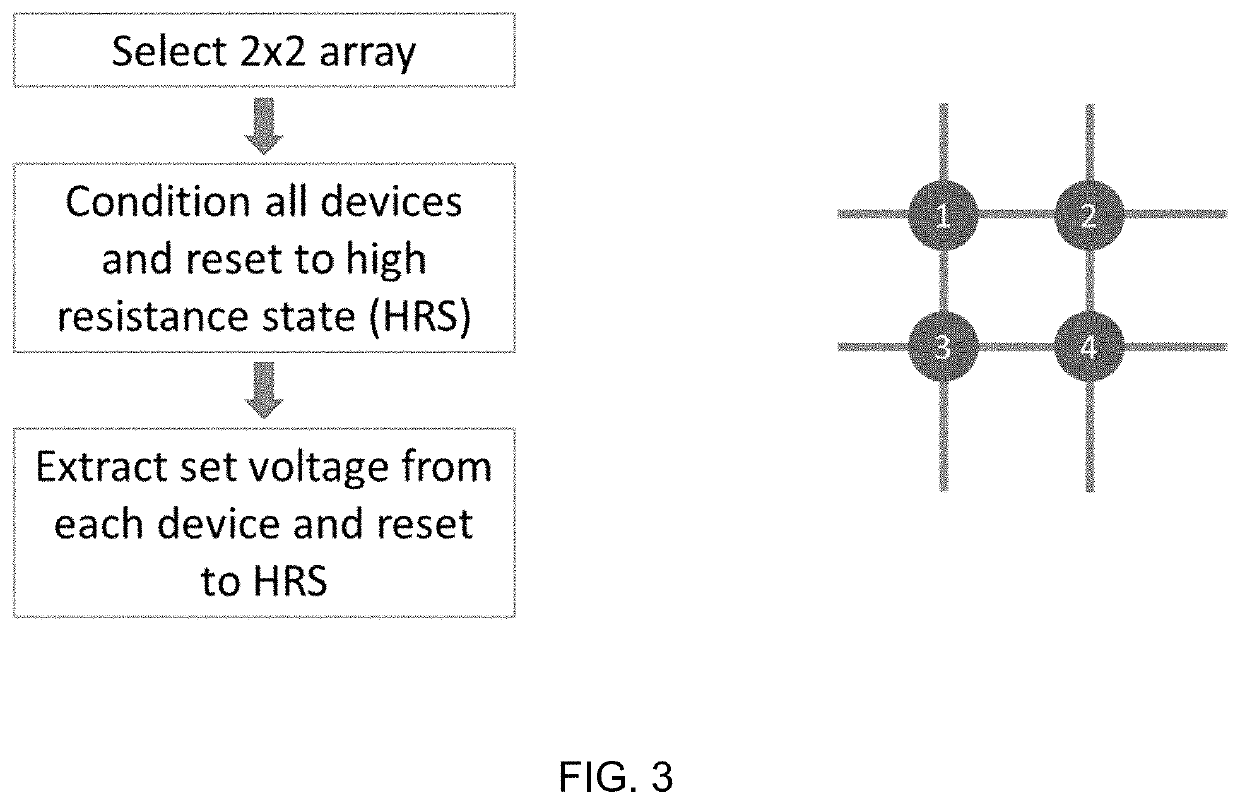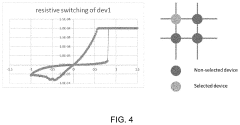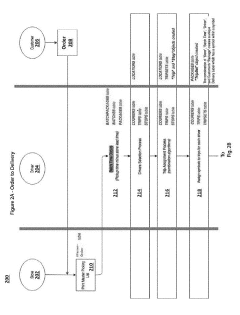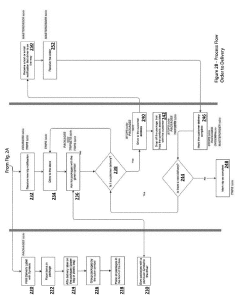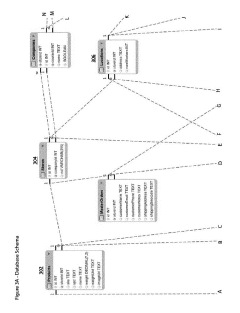Ferrofluid's Role in Developing Secure Digital Infrastructure
JUL 9, 20259 MIN READ
Generate Your Research Report Instantly with AI Agent
Patsnap Eureka helps you evaluate technical feasibility & market potential.
Ferrofluid Tech Evolution
Ferrofluids have undergone a remarkable evolution since their initial discovery in the 1960s, with significant implications for developing secure digital infrastructure. The technology's progression can be traced through several key stages, each marked by important breakthroughs and applications.
In the early stages, ferrofluids were primarily used in simple mechanical applications, such as seals and dampers. However, as research advanced, their potential for more sophisticated uses became apparent. The 1980s and 1990s saw a surge in ferrofluid research, particularly in the field of data storage. Scientists began exploring ways to use ferrofluids to improve hard disk drive performance and reliability.
A major milestone in ferrofluid technology came in the early 2000s with the development of nanoscale ferrofluids. These advanced materials offered enhanced stability and magnetic properties, opening up new possibilities for their use in digital security applications. Researchers began investigating ferrofluids for their potential in creating tamper-evident seals and coatings for sensitive electronic components.
The mid-2000s marked another significant leap forward, as ferrofluids found their way into the realm of cybersecurity. Scientists discovered that ferrofluid-based systems could be used to create physical unclonable functions (PUFs), which are unique, unpredictable physical characteristics that can serve as security keys. This development paved the way for more robust hardware-based security solutions.
In the 2010s, ferrofluid technology saw further advancements in its application to secure digital infrastructure. Researchers began exploring the use of ferrofluids in creating dynamic, reconfigurable security systems. These systems could adapt to changing threats by altering their physical properties in response to external stimuli, providing an additional layer of protection for critical digital assets.
Most recently, the integration of ferrofluids with other emerging technologies has led to even more innovative security solutions. For instance, the combination of ferrofluids with artificial intelligence and machine learning algorithms has resulted in adaptive security systems that can learn from and respond to new threats in real-time. Additionally, the use of ferrofluids in quantum computing applications is being explored as a potential means of enhancing the security and stability of quantum bits.
As we look to the future, the evolution of ferrofluid technology in secure digital infrastructure continues to accelerate. Current research is focused on developing ferrofluids with even more precise control over their magnetic properties, enabling the creation of more sophisticated and secure systems. The potential for ferrofluids to revolutionize digital security remains vast, with ongoing advancements promising to shape the landscape of cybersecurity for years to come.
In the early stages, ferrofluids were primarily used in simple mechanical applications, such as seals and dampers. However, as research advanced, their potential for more sophisticated uses became apparent. The 1980s and 1990s saw a surge in ferrofluid research, particularly in the field of data storage. Scientists began exploring ways to use ferrofluids to improve hard disk drive performance and reliability.
A major milestone in ferrofluid technology came in the early 2000s with the development of nanoscale ferrofluids. These advanced materials offered enhanced stability and magnetic properties, opening up new possibilities for their use in digital security applications. Researchers began investigating ferrofluids for their potential in creating tamper-evident seals and coatings for sensitive electronic components.
The mid-2000s marked another significant leap forward, as ferrofluids found their way into the realm of cybersecurity. Scientists discovered that ferrofluid-based systems could be used to create physical unclonable functions (PUFs), which are unique, unpredictable physical characteristics that can serve as security keys. This development paved the way for more robust hardware-based security solutions.
In the 2010s, ferrofluid technology saw further advancements in its application to secure digital infrastructure. Researchers began exploring the use of ferrofluids in creating dynamic, reconfigurable security systems. These systems could adapt to changing threats by altering their physical properties in response to external stimuli, providing an additional layer of protection for critical digital assets.
Most recently, the integration of ferrofluids with other emerging technologies has led to even more innovative security solutions. For instance, the combination of ferrofluids with artificial intelligence and machine learning algorithms has resulted in adaptive security systems that can learn from and respond to new threats in real-time. Additionally, the use of ferrofluids in quantum computing applications is being explored as a potential means of enhancing the security and stability of quantum bits.
As we look to the future, the evolution of ferrofluid technology in secure digital infrastructure continues to accelerate. Current research is focused on developing ferrofluids with even more precise control over their magnetic properties, enabling the creation of more sophisticated and secure systems. The potential for ferrofluids to revolutionize digital security remains vast, with ongoing advancements promising to shape the landscape of cybersecurity for years to come.
Digital Security Demands
The digital landscape is evolving rapidly, and with it comes an increasing demand for robust security measures to protect sensitive information and critical infrastructure. As cyber threats become more sophisticated, organizations across various sectors are seeking innovative solutions to safeguard their digital assets. This growing need for enhanced digital security has led to a surge in research and development of advanced technologies, including the exploration of unconventional approaches such as the use of ferrofluids.
The rise of cloud computing, Internet of Things (IoT) devices, and interconnected systems has expanded the attack surface for malicious actors, making traditional security measures insufficient. Enterprises and government agencies are now facing complex challenges in securing their networks, data centers, and communication channels against advanced persistent threats, ransomware attacks, and state-sponsored cyber espionage.
One of the key drivers of digital security demands is the increasing frequency and severity of data breaches. High-profile incidents have highlighted the devastating consequences of inadequate security measures, including financial losses, reputational damage, and compromised personal information of millions of users. This has led to a heightened awareness among organizations and a willingness to invest in cutting-edge security technologies.
Another significant factor contributing to the demand for enhanced digital security is the growing regulatory landscape. Governments worldwide are implementing stricter data protection laws and cybersecurity regulations, such as the General Data Protection Regulation (GDPR) in the European Union and the California Consumer Privacy Act (CCPA) in the United States. These regulations mandate organizations to implement robust security measures and demonstrate compliance, further driving the need for innovative security solutions.
The shift towards remote work and distributed teams, accelerated by the global pandemic, has also intensified the need for secure digital infrastructure. Organizations are now required to protect a more dispersed network of endpoints and ensure secure access to corporate resources from various locations and devices. This has led to an increased focus on technologies such as zero-trust architecture, secure access service edge (SASE), and advanced encryption methods.
As the Internet of Things (IoT) continues to expand, securing the vast network of connected devices has become a critical concern. From smart home appliances to industrial control systems, the proliferation of IoT devices presents unique security challenges that require innovative solutions. This has spurred research into novel approaches to device authentication, secure communication protocols, and tamper-resistant hardware.
In response to these evolving demands, the cybersecurity industry is exploring unconventional technologies and interdisciplinary approaches to develop more resilient and adaptive security systems. This is where the potential application of ferrofluids in digital security comes into play, offering unique properties that could potentially address some of the current limitations in hardware-based security measures and physical protection of digital infrastructure.
The rise of cloud computing, Internet of Things (IoT) devices, and interconnected systems has expanded the attack surface for malicious actors, making traditional security measures insufficient. Enterprises and government agencies are now facing complex challenges in securing their networks, data centers, and communication channels against advanced persistent threats, ransomware attacks, and state-sponsored cyber espionage.
One of the key drivers of digital security demands is the increasing frequency and severity of data breaches. High-profile incidents have highlighted the devastating consequences of inadequate security measures, including financial losses, reputational damage, and compromised personal information of millions of users. This has led to a heightened awareness among organizations and a willingness to invest in cutting-edge security technologies.
Another significant factor contributing to the demand for enhanced digital security is the growing regulatory landscape. Governments worldwide are implementing stricter data protection laws and cybersecurity regulations, such as the General Data Protection Regulation (GDPR) in the European Union and the California Consumer Privacy Act (CCPA) in the United States. These regulations mandate organizations to implement robust security measures and demonstrate compliance, further driving the need for innovative security solutions.
The shift towards remote work and distributed teams, accelerated by the global pandemic, has also intensified the need for secure digital infrastructure. Organizations are now required to protect a more dispersed network of endpoints and ensure secure access to corporate resources from various locations and devices. This has led to an increased focus on technologies such as zero-trust architecture, secure access service edge (SASE), and advanced encryption methods.
As the Internet of Things (IoT) continues to expand, securing the vast network of connected devices has become a critical concern. From smart home appliances to industrial control systems, the proliferation of IoT devices presents unique security challenges that require innovative solutions. This has spurred research into novel approaches to device authentication, secure communication protocols, and tamper-resistant hardware.
In response to these evolving demands, the cybersecurity industry is exploring unconventional technologies and interdisciplinary approaches to develop more resilient and adaptive security systems. This is where the potential application of ferrofluids in digital security comes into play, offering unique properties that could potentially address some of the current limitations in hardware-based security measures and physical protection of digital infrastructure.
Ferrofluid Challenges
While ferrofluids offer promising applications in developing secure digital infrastructure, several significant challenges need to be addressed for their widespread adoption and effective implementation.
One of the primary challenges is the long-term stability of ferrofluids. These colloidal suspensions of magnetic nanoparticles tend to agglomerate over time, leading to a loss of their unique properties. This instability can compromise the reliability and performance of ferrofluid-based security systems, potentially creating vulnerabilities in digital infrastructure protection.
Another critical challenge lies in the precise control and manipulation of ferrofluids at the microscale and nanoscale levels. Achieving fine-tuned control over ferrofluid behavior is crucial for developing advanced security features, such as dynamic encryption mechanisms or adaptive shielding systems. However, the complex interplay between magnetic fields, fluid dynamics, and nanoparticle interactions makes this a formidable task.
The environmental sensitivity of ferrofluids poses another significant hurdle. Factors such as temperature fluctuations, electromagnetic interference, and mechanical vibrations can affect the behavior and properties of ferrofluids. Ensuring consistent performance across diverse environmental conditions is essential for maintaining the integrity of secure digital infrastructure.
Scalability and cost-effectiveness present additional challenges in the widespread adoption of ferrofluid-based security solutions. Developing manufacturing processes that can produce high-quality ferrofluids at scale while maintaining cost-efficiency is crucial for their integration into large-scale digital infrastructure projects.
Compatibility with existing digital systems and infrastructure is another area of concern. Integrating ferrofluid-based security features into established digital ecosystems requires careful consideration of interface design, system architecture, and potential electromagnetic interference issues.
Furthermore, the potential health and environmental impacts of ferrofluids, particularly in the event of leaks or disposal, need to be thoroughly assessed and mitigated. Ensuring the safe handling, containment, and eventual disposal of ferrofluids is critical for their sustainable use in digital infrastructure.
Lastly, the development of standardized testing and certification protocols for ferrofluid-based security systems presents a significant challenge. Establishing industry-wide standards and best practices for evaluating the effectiveness, reliability, and security of these systems is essential for building trust and facilitating their adoption in critical digital infrastructure applications.
One of the primary challenges is the long-term stability of ferrofluids. These colloidal suspensions of magnetic nanoparticles tend to agglomerate over time, leading to a loss of their unique properties. This instability can compromise the reliability and performance of ferrofluid-based security systems, potentially creating vulnerabilities in digital infrastructure protection.
Another critical challenge lies in the precise control and manipulation of ferrofluids at the microscale and nanoscale levels. Achieving fine-tuned control over ferrofluid behavior is crucial for developing advanced security features, such as dynamic encryption mechanisms or adaptive shielding systems. However, the complex interplay between magnetic fields, fluid dynamics, and nanoparticle interactions makes this a formidable task.
The environmental sensitivity of ferrofluids poses another significant hurdle. Factors such as temperature fluctuations, electromagnetic interference, and mechanical vibrations can affect the behavior and properties of ferrofluids. Ensuring consistent performance across diverse environmental conditions is essential for maintaining the integrity of secure digital infrastructure.
Scalability and cost-effectiveness present additional challenges in the widespread adoption of ferrofluid-based security solutions. Developing manufacturing processes that can produce high-quality ferrofluids at scale while maintaining cost-efficiency is crucial for their integration into large-scale digital infrastructure projects.
Compatibility with existing digital systems and infrastructure is another area of concern. Integrating ferrofluid-based security features into established digital ecosystems requires careful consideration of interface design, system architecture, and potential electromagnetic interference issues.
Furthermore, the potential health and environmental impacts of ferrofluids, particularly in the event of leaks or disposal, need to be thoroughly assessed and mitigated. Ensuring the safe handling, containment, and eventual disposal of ferrofluids is critical for their sustainable use in digital infrastructure.
Lastly, the development of standardized testing and certification protocols for ferrofluid-based security systems presents a significant challenge. Establishing industry-wide standards and best practices for evaluating the effectiveness, reliability, and security of these systems is essential for building trust and facilitating their adoption in critical digital infrastructure applications.
Current Ferrofluid Apps
01 Composition and preparation of ferrofluids
Ferrofluids are colloidal suspensions of magnetic nanoparticles in a carrier fluid. They are typically composed of magnetite or other ferromagnetic materials coated with surfactants to prevent agglomeration. The preparation process involves careful control of particle size and distribution to maintain stability and magnetic properties.- Composition and preparation of ferrofluids: Ferrofluids are colloidal suspensions of magnetic nanoparticles in a carrier fluid. They are typically composed of magnetite or other ferromagnetic materials coated with surfactants to prevent agglomeration. The preparation process involves careful control of particle size and distribution to maintain stability and magnetic properties.
- Applications in sealing and lubrication: Ferrofluids are widely used in sealing and lubrication applications, particularly in rotating shaft seals. They provide a liquid barrier that can be controlled by magnetic fields, offering advantages in terms of low friction, long life, and the ability to operate in vacuum environments.
- Thermal management and cooling systems: Ferrofluids are employed in thermal management solutions, particularly for electronic devices. They can be used in cooling systems where their magnetic properties allow for enhanced heat transfer and precise control of fluid flow, improving overall cooling efficiency.
- Sensor and actuator technologies: Ferrofluids are utilized in various sensor and actuator applications. Their unique response to magnetic fields allows for the development of precise position sensors, accelerometers, and other measurement devices. They can also be used in actuators for fine motion control.
- Medical and biomedical applications: Ferrofluids have potential applications in the medical field, including targeted drug delivery, magnetic hyperthermia for cancer treatment, and contrast agents for magnetic resonance imaging (MRI). Their ability to be manipulated by external magnetic fields makes them valuable for minimally invasive procedures.
02 Applications in sealing and lubrication
Ferrofluids are widely used in sealing and lubrication applications, particularly in rotating shaft seals. They provide a liquid barrier that can be controlled by magnetic fields, offering advantages in terms of low friction, long life, and the ability to operate in vacuum environments.Expand Specific Solutions03 Magnetic field-responsive devices
Ferrofluids are utilized in various devices that respond to magnetic fields. These include sensors, actuators, and dampers. The unique properties of ferrofluids allow for precise control and manipulation of fluid behavior in response to external magnetic fields, enabling novel applications in areas such as vibration control and energy harvesting.Expand Specific Solutions04 Heat transfer and cooling applications
Ferrofluids have been explored for their potential in heat transfer and cooling applications. Their ability to be manipulated by magnetic fields allows for enhanced heat transfer in targeted areas. This property is particularly useful in electronic cooling systems and other applications where precise thermal management is required.Expand Specific Solutions05 Measurement and instrumentation
Ferrofluids are employed in various measurement and instrumentation applications. Their unique magnetic and fluid properties make them suitable for use in devices such as accelerometers, inclinometers, and pressure sensors. The ability to detect small changes in magnetic field or orientation allows for high-precision measurements in diverse fields.Expand Specific Solutions
Key Ferrofluid Players
The ferrofluid-based digital infrastructure security market is in its early growth stage, with increasing interest from major tech companies and research institutions. The market size is expected to expand significantly as cybersecurity concerns grow. While the technology is still developing, key players like IBM, Sony, and Philips are investing in R&D to advance ferrofluid applications in data protection and secure computing. Universities such as Arizona State and Fudan are also contributing to technological progress. As the field matures, we can anticipate more commercial solutions emerging, though widespread adoption may take time due to the nascent nature of ferrofluid-based security systems.
International Business Machines Corp.
Technical Solution: IBM has been exploring the use of ferrofluids in developing secure digital infrastructure. Their approach involves utilizing the unique magnetic properties of ferrofluids to create dynamic and adaptive security systems. IBM's research focuses on developing ferrofluid-based encryption devices that can generate truly random encryption keys based on the unpredictable movement of magnetic nanoparticles in the fluid[1]. This technology could potentially enhance the security of data transmission and storage by providing a physical layer of security that is extremely difficult to replicate or predict. Additionally, IBM is investigating the use of ferrofluids in creating self-healing network cables that can automatically repair physical damage, thereby increasing the resilience of digital infrastructure[3].
Strengths: Cutting-edge approach to physical security, potential for truly random encryption key generation, and self-healing capabilities for infrastructure. Weaknesses: Technology still in early stages, may require significant investment in new hardware infrastructure.
Arizona State University
Technical Solution: Researchers at Arizona State University are investigating the use of ferrofluids in creating adaptive and secure communication channels. Their approach focuses on developing ferrofluid-based optical switches and waveguides that can dynamically alter the path of light signals based on applied magnetic fields. This technology could potentially be used to create physical-layer secure communication systems that are resistant to interception and eavesdropping[9]. The university is also exploring the use of ferrofluids in creating tunable electromagnetic shields that can protect sensitive electronic equipment from external interference or attacks. Additionally, their research includes the development of ferrofluid-based sensors that can detect and localize electromagnetic anomalies, potentially identifying unauthorized wireless transmissions or attempts to jam communication signals[10].
Strengths: Innovative approach to physical-layer security in communications, potential for integration with existing optical network infrastructure. Weaknesses: May require significant development of new communication hardware, effectiveness in real-world conditions still to be fully demonstrated.
Ferrofluid Innovations
Physical unclonable functions with copper-silicon oxide programmable metallization cells
PatentActiveUS20220148982A1
Innovation
- The development of Programmable Metallization Cell (PMC) PUF systems based on copper and silicon oxide, which utilize a layer of silicon oxide between copper electrodes to generate secure keys with low power consumption and resistance switching, making them resistant to side-channel attacks.
Delivery and routing management based on multi-identifier labels
PatentActiveUS20190255573A1
Innovation
- Implementing a multi-identifier label system that uses a primary symbol for each driver's route and a secondary symbol for each package, allowing for easy sorting and delivery without requiring human interpretation of text-based labels, with the system generating routes and labels based on a master picking list and communicating them to drivers through a communication network.
Cybersecurity Standards
Cybersecurity standards play a crucial role in ensuring the integrity and security of digital infrastructure, including those incorporating ferrofluid technology. As ferrofluids find applications in various aspects of secure digital systems, it becomes imperative to establish and adhere to robust cybersecurity standards that address the unique challenges posed by this innovative material.
The development of cybersecurity standards for ferrofluid-based digital infrastructure requires a multifaceted approach. These standards must encompass not only traditional cybersecurity measures but also consider the specific properties and vulnerabilities associated with ferrofluids. One key aspect is the need for standards that address the potential for electromagnetic interference (EMI) in ferrofluid-based systems, as these materials are highly responsive to magnetic fields.
Standards should also focus on the secure integration of ferrofluid components within larger digital systems. This includes protocols for data encryption and secure communication between ferrofluid-enabled devices and other network elements. Additionally, standards must be established for the proper handling and disposal of ferrofluid-containing hardware to prevent potential data leakage or unauthorized access to sensitive information.
Another critical area for standardization is the development of testing and certification procedures for ferrofluid-based security systems. These standards should outline rigorous methodologies for assessing the resilience of such systems against various cyber threats, including physical tampering, electromagnetic attacks, and software-based intrusions.
Furthermore, cybersecurity standards for ferrofluid technology must address the unique challenges of data storage and retrieval in magnetic fluid environments. This includes establishing guidelines for secure data encoding, storage density optimization, and error correction mechanisms tailored to the properties of ferrofluids.
As the field of ferrofluid-based digital infrastructure continues to evolve, it is essential that cybersecurity standards remain adaptable and forward-looking. Regular reviews and updates to these standards will be necessary to keep pace with emerging threats and technological advancements. Collaboration between industry stakeholders, research institutions, and regulatory bodies will be crucial in developing comprehensive and effective cybersecurity standards for this innovative technology.
The development of cybersecurity standards for ferrofluid-based digital infrastructure requires a multifaceted approach. These standards must encompass not only traditional cybersecurity measures but also consider the specific properties and vulnerabilities associated with ferrofluids. One key aspect is the need for standards that address the potential for electromagnetic interference (EMI) in ferrofluid-based systems, as these materials are highly responsive to magnetic fields.
Standards should also focus on the secure integration of ferrofluid components within larger digital systems. This includes protocols for data encryption and secure communication between ferrofluid-enabled devices and other network elements. Additionally, standards must be established for the proper handling and disposal of ferrofluid-containing hardware to prevent potential data leakage or unauthorized access to sensitive information.
Another critical area for standardization is the development of testing and certification procedures for ferrofluid-based security systems. These standards should outline rigorous methodologies for assessing the resilience of such systems against various cyber threats, including physical tampering, electromagnetic attacks, and software-based intrusions.
Furthermore, cybersecurity standards for ferrofluid technology must address the unique challenges of data storage and retrieval in magnetic fluid environments. This includes establishing guidelines for secure data encoding, storage density optimization, and error correction mechanisms tailored to the properties of ferrofluids.
As the field of ferrofluid-based digital infrastructure continues to evolve, it is essential that cybersecurity standards remain adaptable and forward-looking. Regular reviews and updates to these standards will be necessary to keep pace with emerging threats and technological advancements. Collaboration between industry stakeholders, research institutions, and regulatory bodies will be crucial in developing comprehensive and effective cybersecurity standards for this innovative technology.
Ferrofluid Eco-Impact
The environmental impact of ferrofluids in developing secure digital infrastructure is a critical consideration that requires careful assessment. Ferrofluids, composed of nanoscale magnetic particles suspended in a carrier fluid, have unique properties that make them valuable for various applications in digital security. However, their production and use may have potential ecological consequences that need to be addressed.
The manufacturing process of ferrofluids involves the synthesis of magnetic nanoparticles, typically iron oxides, which requires energy-intensive processes and the use of chemical reagents. This production phase may contribute to carbon emissions and generate chemical waste that needs proper management. Additionally, the carrier fluids used in ferrofluids are often petroleum-based, raising concerns about their long-term environmental persistence and potential for contamination if not properly contained or disposed of.
In the context of digital infrastructure, ferrofluids are primarily used in cooling systems, data storage devices, and security seals. While these applications can enhance the efficiency and security of digital systems, the potential for environmental exposure during maintenance, replacement, or disposal of ferrofluid-containing components must be considered. Leakage or improper disposal could lead to soil or water contamination, potentially affecting local ecosystems.
On the positive side, the use of ferrofluids in cooling systems for data centers and other digital infrastructure can lead to improved energy efficiency, potentially reducing overall power consumption and associated carbon emissions. The enhanced thermal management capabilities of ferrofluids allow for more compact and efficient designs, which can indirectly contribute to resource conservation in the manufacturing of digital hardware.
The recyclability and end-of-life management of ferrofluid-containing devices are important factors in assessing their overall environmental impact. Research into biodegradable carrier fluids and environmentally friendly magnetic nanoparticles is ongoing, aiming to develop more sustainable ferrofluid formulations. Additionally, the development of effective recycling processes for ferrofluid components could help mitigate their environmental footprint.
As the use of ferrofluids in digital security applications expands, it is crucial to implement comprehensive life cycle assessments to fully understand and minimize their ecological impact. This includes evaluating the sourcing of raw materials, optimizing production processes, improving containment and handling protocols, and developing responsible disposal and recycling methods. By addressing these aspects, the integration of ferrofluids into secure digital infrastructure can be aligned with broader sustainability goals, ensuring that the benefits of enhanced security do not come at an unacceptable environmental cost.
The manufacturing process of ferrofluids involves the synthesis of magnetic nanoparticles, typically iron oxides, which requires energy-intensive processes and the use of chemical reagents. This production phase may contribute to carbon emissions and generate chemical waste that needs proper management. Additionally, the carrier fluids used in ferrofluids are often petroleum-based, raising concerns about their long-term environmental persistence and potential for contamination if not properly contained or disposed of.
In the context of digital infrastructure, ferrofluids are primarily used in cooling systems, data storage devices, and security seals. While these applications can enhance the efficiency and security of digital systems, the potential for environmental exposure during maintenance, replacement, or disposal of ferrofluid-containing components must be considered. Leakage or improper disposal could lead to soil or water contamination, potentially affecting local ecosystems.
On the positive side, the use of ferrofluids in cooling systems for data centers and other digital infrastructure can lead to improved energy efficiency, potentially reducing overall power consumption and associated carbon emissions. The enhanced thermal management capabilities of ferrofluids allow for more compact and efficient designs, which can indirectly contribute to resource conservation in the manufacturing of digital hardware.
The recyclability and end-of-life management of ferrofluid-containing devices are important factors in assessing their overall environmental impact. Research into biodegradable carrier fluids and environmentally friendly magnetic nanoparticles is ongoing, aiming to develop more sustainable ferrofluid formulations. Additionally, the development of effective recycling processes for ferrofluid components could help mitigate their environmental footprint.
As the use of ferrofluids in digital security applications expands, it is crucial to implement comprehensive life cycle assessments to fully understand and minimize their ecological impact. This includes evaluating the sourcing of raw materials, optimizing production processes, improving containment and handling protocols, and developing responsible disposal and recycling methods. By addressing these aspects, the integration of ferrofluids into secure digital infrastructure can be aligned with broader sustainability goals, ensuring that the benefits of enhanced security do not come at an unacceptable environmental cost.
Unlock deeper insights with Patsnap Eureka Quick Research — get a full tech report to explore trends and direct your research. Try now!
Generate Your Research Report Instantly with AI Agent
Supercharge your innovation with Patsnap Eureka AI Agent Platform!
